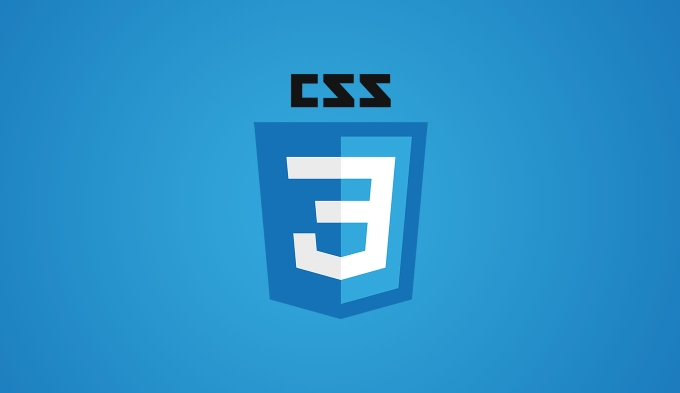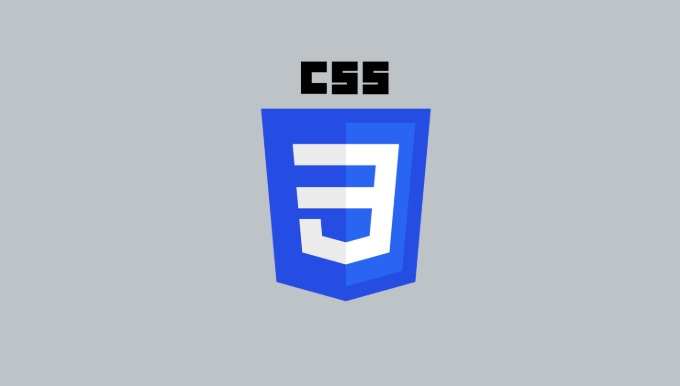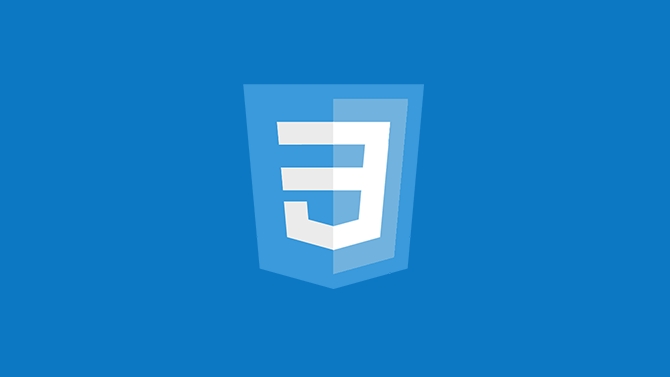What are the different types of CSS Selectors available?
Jul 03, 2025 am 01:49 AMCSS selectors mainly include basic selectors, combination selectors, attribute selectors, pseudo-classes and pseudo-element selectors. 1. The basic selector includes elements, classes, IDs, and wildcard selectors, which are used for basic style settings. 2. The combination selector contains descendants, child elements, adjacent brothers, and general brother selectors, which are used to handle element structure relationships. 3. The attribute selector matches elements based on attributes and is suitable for specific element control such as forms and links. 4. Pseudo-class and pseudo-element selector are used to control states and generate content, such as:hover, ::before, ::after, etc., to improve interaction and decorative effects.

The CSS selector is a very core part of front-end development, used to accurately select elements in the page and thus apply styles. Understanding different types of selectors can help you write CSS more efficiently, reduce redundant code, and better control the priority and scope of styles.

1. Basic selectors: the most commonly used and most basic
This type of selector is the most commonly used when writing CSS every day, including:

- Element selector (such as
div,p): directly select elements based on the HTML tag name. - Class selector (such as
.class-name): Select one or more elements by the class attribute value. - ID selector (such as
#id-name): Select a specific element by a unique id, note that the id in a page should be unique. - Wildcard selector (
*): Match all elements, often used to reset the default style.
These selectors are simple but practical and are suitable for most basic style settings.
2. Combination selector: Combine multiple selectors for more precise matching
Sometimes we need to apply styles to elements under certain structures, and then we can use the combination selector:

- Descendant selector (such as
div p): Select all p elements inside the div, no matter how deep the nesting is. - Children element selector (such as
div > p): Only the direct child element p of the div is selected. - Adjacent brother selector (such as
h1 p): Select the p element immediately after h1. - Universal sibling selector (such as
h1 ~ p): Select all p elements of the same level after h1.
These selectors are particularly suitable for situations in layout where relationships between elements need to be handled, such as content paragraphs after the title of the article.
3. Attribute selector: matches the attributes of the element
When you want to style according to HTML attributes, the property selector comes in handy:
-
[type]: Select the element with the type attribute. -
[type="text"]: Select the element with type "text". -
[class~="btn"]: Select the element containing "btn" in the class. -
[href*="example"]: Select the link containing "example" in href.
This selector is very useful when dealing with elements with specific attributes, such as forms, links, images, etc.
4. Pseudo-class and pseudo-element selector: for state and content style control
Instead of selecting the actual DOM node, this type of selector selects a certain state or generates content:
-
Pseudo-classes :
-
:hover: The status when the mouse is hovered. -
:active: When the element is activated (such as click). -
:focus: When the element gets focus. -
:nth-child(n): Select the nth child element.
-
-
Pseudo-elements :
-
::beforeand::after: Insert content before and after the element. -
::first-line: Select the first line of the text block. -
::placeholder: Select the placeholder text in the input box.
-
Pseudo-classes are mostly used to change the interactive state, while pseudo-elements are often used to add decorative content.
Basically these common types. Although it seems a lot, many of them are naturally used in actual projects. The key is to understand the differences and applicable scenarios between them, so that the written CSS will be both concise and effective.
The above is the detailed content of What are the different types of CSS Selectors available?. For more information, please follow other related articles on the PHP Chinese website!

Hot AI Tools

Undress AI Tool
Undress images for free

Undresser.AI Undress
AI-powered app for creating realistic nude photos

AI Clothes Remover
Online AI tool for removing clothes from photos.

Clothoff.io
AI clothes remover

Video Face Swap
Swap faces in any video effortlessly with our completely free AI face swap tool!

Hot Article

Hot Tools

Notepad++7.3.1
Easy-to-use and free code editor

SublimeText3 Chinese version
Chinese version, very easy to use

Zend Studio 13.0.1
Powerful PHP integrated development environment

Dreamweaver CS6
Visual web development tools

SublimeText3 Mac version
God-level code editing software (SublimeText3)

Hot Topics
 What is 'render-blocking CSS'?
Jun 24, 2025 am 12:42 AM
What is 'render-blocking CSS'?
Jun 24, 2025 am 12:42 AM
CSS blocks page rendering because browsers view inline and external CSS as key resources by default, especially with imported stylesheets, header large amounts of inline CSS, and unoptimized media query styles. 1. Extract critical CSS and embed it into HTML; 2. Delay loading non-critical CSS through JavaScript; 3. Use media attributes to optimize loading such as print styles; 4. Compress and merge CSS to reduce requests. It is recommended to use tools to extract key CSS, combine rel="preload" asynchronous loading, and use media delayed loading reasonably to avoid excessive splitting and complex script control.
 External vs. Internal CSS: What's the Best Approach?
Jun 20, 2025 am 12:45 AM
External vs. Internal CSS: What's the Best Approach?
Jun 20, 2025 am 12:45 AM
ThebestapproachforCSSdependsontheproject'sspecificneeds.Forlargerprojects,externalCSSisbetterduetomaintainabilityandreusability;forsmallerprojectsorsingle-pageapplications,internalCSSmightbemoresuitable.It'scrucialtobalanceprojectsize,performanceneed
 Does my CSS must be on lower case?
Jun 19, 2025 am 12:29 AM
Does my CSS must be on lower case?
Jun 19, 2025 am 12:29 AM
No,CSSdoesnothavetobeinlowercase.However,usinglowercaseisrecommendedfor:1)Consistencyandreadability,2)Avoidingerrorsinrelatedtechnologies,3)Potentialperformancebenefits,and4)Improvedcollaborationwithinteams.
 CSS Case Sensitivity: Understanding What Matters
Jun 20, 2025 am 12:09 AM
CSS Case Sensitivity: Understanding What Matters
Jun 20, 2025 am 12:09 AM
CSSismostlycase-insensitive,butURLsandfontfamilynamesarecase-sensitive.1)Propertiesandvalueslikecolor:red;arenotcase-sensitive.2)URLsmustmatchtheserver'scase,e.g.,/images/Logo.png.3)Fontfamilynameslike'OpenSans'mustbeexact.
 What is Autoprefixer and how does it work?
Jul 02, 2025 am 01:15 AM
What is Autoprefixer and how does it work?
Jul 02, 2025 am 01:15 AM
Autoprefixer is a tool that automatically adds vendor prefixes to CSS attributes based on the target browser scope. 1. It solves the problem of manually maintaining prefixes with errors; 2. Work through the PostCSS plug-in form, parse CSS, analyze attributes that need to be prefixed, and generate code according to configuration; 3. The usage steps include installing plug-ins, setting browserslist, and enabling them in the build process; 4. Notes include not manually adding prefixes, keeping configuration updates, prefixes not all attributes, and it is recommended to use them with the preprocessor.
 What are CSS counters?
Jun 19, 2025 am 12:34 AM
What are CSS counters?
Jun 19, 2025 am 12:34 AM
CSScounterscanautomaticallynumbersectionsandlists.1)Usecounter-resettoinitialize,counter-incrementtoincrease,andcounter()orcounters()todisplayvalues.2)CombinewithJavaScriptfordynamiccontenttoensureaccurateupdates.
 CSS: When Does Case Matter (and When Doesn't)?
Jun 19, 2025 am 12:27 AM
CSS: When Does Case Matter (and When Doesn't)?
Jun 19, 2025 am 12:27 AM
In CSS, selector and attribute names are case-sensitive, while values, named colors, URLs, and custom attributes are case-sensitive. 1. The selector and attribute names are case-insensitive, such as background-color and background-Color are the same. 2. The hexadecimal color in the value is case-sensitive, but the named color is case-sensitive, such as red and Red is invalid. 3. URLs are case sensitive and may cause file loading problems. 4. Custom properties (variables) are case sensitive, and you need to pay attention to the consistency of case when using them.
 Case Sensitivity in CSS: Selectors, Properties, and Values Explained
Jun 19, 2025 am 12:38 AM
Case Sensitivity in CSS: Selectors, Properties, and Values Explained
Jun 19, 2025 am 12:38 AM
CSSselectorsandpropertynamesarecase-insensitive,whilevaluescanbecase-sensitivedependingoncontext.1)Selectorslike'div'and'DIV'areequivalent.2)Propertiessuchas'background-color'and'BACKGROUND-COLOR'aretreatedthesame.3)Valueslikecolornamesarecase-insens






